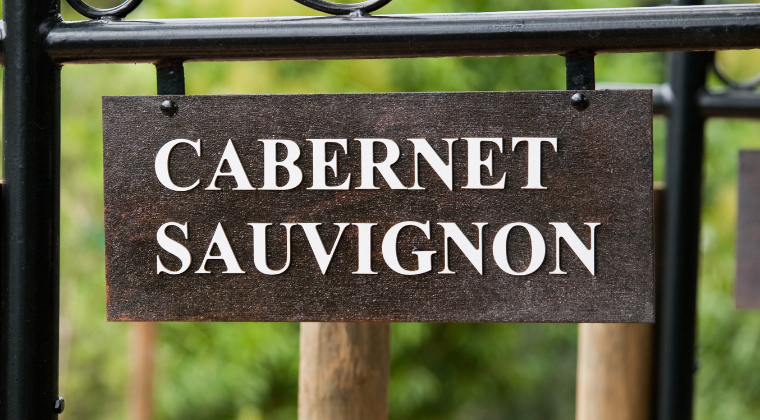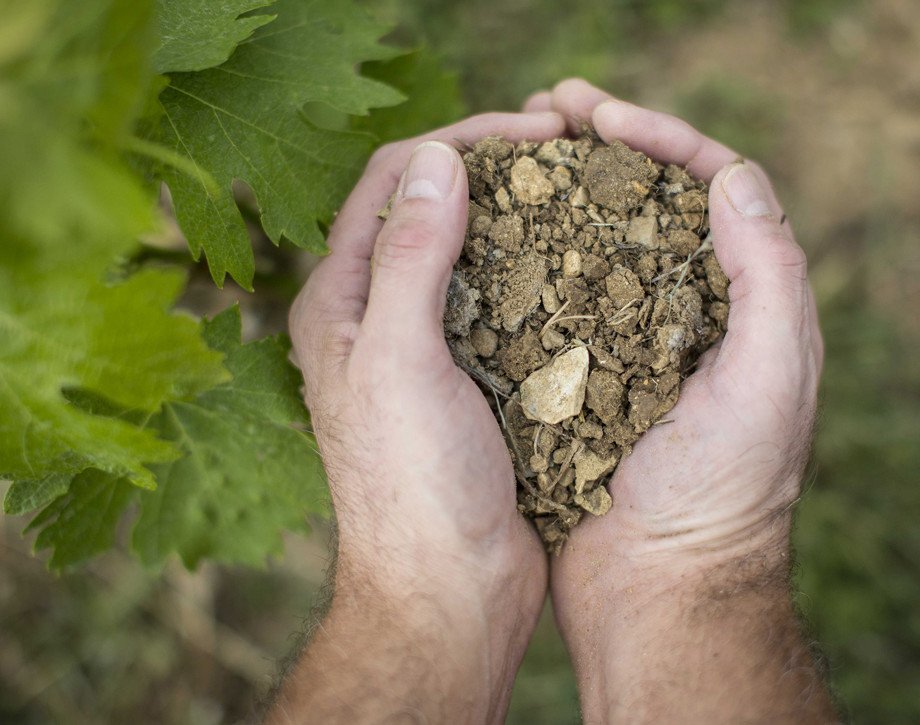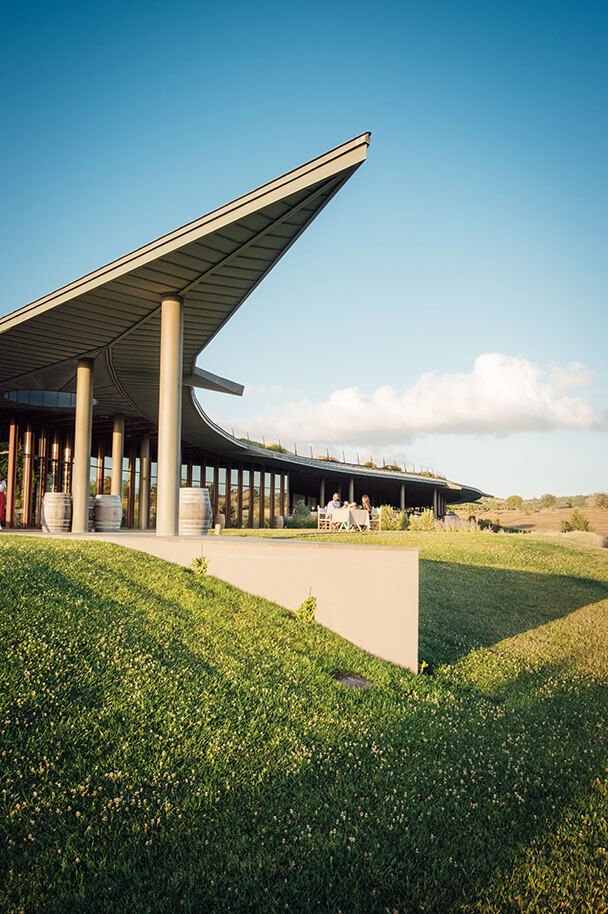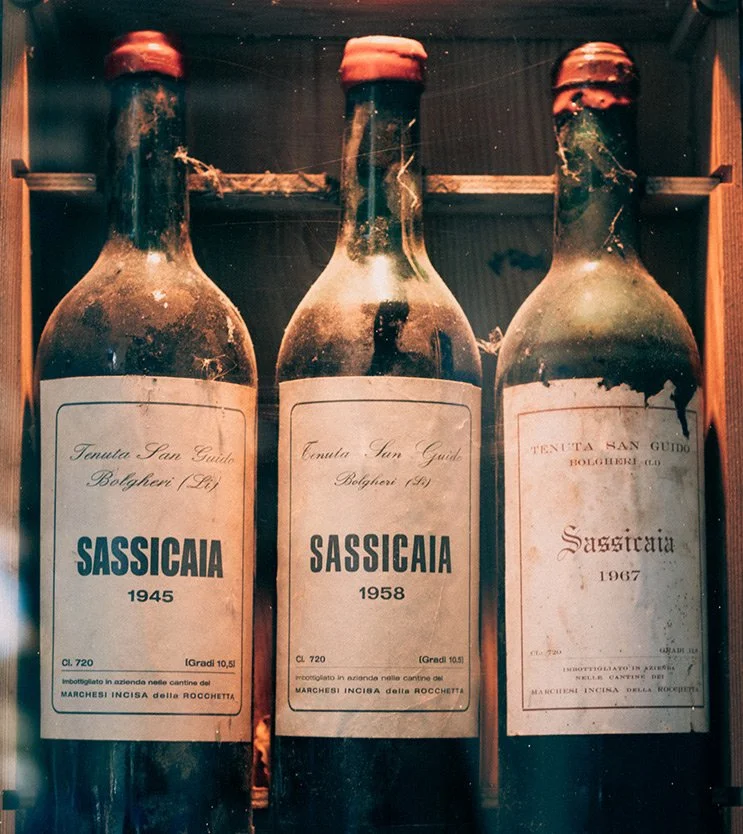Get to know Italian Cabernet Sauvignon
Producers, Regions, and Pronunciations.
When it comes to Italian wines, Cabernet Sauvignon is one of the best grape varieties you can find. Originating from Bordeaux, France, this red wine grape has found a perfect home in Tuscany, Italy. The region's rolling hills and fertile soil create the ideal conditions for growing Cabernet Sauvignon grapes. This blog post will explore the history of Italian Cabernet Sauvignon's areas and the producers known for this unique wine. We will also add Italian pronunciations for each winery to assist you in pronouncing each winery correctly.
By the end of this blog, you will have a much better understanding of Italian Cabernet Sauvignon, its producers, and its history. You will also understand why Cabernet Sauvignon is so well adapted in Italy, specifically in the Tuscan region.
Let's get diving into the world of Italian Cabernet Sauvignon.
Cabernet Sauvignon
Cabernet Sauvignon is a red wine grape originally from Bordeaux, France. The grape was first mentioned in the 17th century and quickly became one of the most popular grapes in Bordeaux wines. In the 18th century, the grape variety was introduced to other regions, such as Tuscany, Italy.
Cabernet Sauvignon can be blended with other red grapes, such as Merlot, Cabernet Franc, and Sangiovese. The flavors of Cabernet Sauvignon wines can include blackberry, cassis, tobacco, and green bell pepper.
Cabernet Sauvignon is known for its full-bodied, tannic wines. The grape produces wines with high levels of acidity and alcohol.
Now that we know a little about Cabernet Sauvignon, let's explore some of the best Tuscan wineries producing Italian Cabernet Sauvignon wines.
History of Italian Cabernet Sauvignon from Tuscany
Cabernet Sauvignon was introduced to the Tuscany region of Italy in the 18th century. The grape found its perfect home in the region's rolling hills and fertile soil. The climate in Tuscany is ideal for growing Cabernet Sauvignon grapes.
The first Tuscan winery to make Cabernet Sauvignon wines was Tenuta San Guido, which is famous for creating unique Cabernet Sauvignon worldwide. We'll go into further detail about Italian Cabernet Sauvignon's history and uniqueness below.
Tuscany is home to many wineries, most notably the Super-Tuscan wineries that produce high-quality Cabernet Sauvignon wines. Some of the best wineries include Frescobaldi, Gaja, Banfi, Ornellaia and Tenuta San Guido.
Super - Tuscan producer to make the most delicate Italian Cabernet Sauvignon. Please also note that Italian Cabernet Sauvignon can be blended with different grape varieties.
What is Super - Tuscans?
Super Tuscan is a term used to describe a style of wine made in Tuscany, Italy. The wines are usually blends of Cabernet Sauvignon and Sangiovese. Super Tuscan wines are known for their high quality and unique flavor profiles. Super-Tuscan wines are produced almost entirely in two important sub-regions of Tuscan territory: Bolgheri and Maremma.
To understand better Italian Cabernet Sauvignon, we will have to look deeply into two sub-regions and producers.
Bolgheri
Bolgheri is a small town located in the province of Livorno on the Tuscan coast. The region is home to some of Italy's most famous wineries, including Antinori, Gaja, and Ornellaia. Bolgheri is known for its Super-Tuscan wines, which are made with a blend of Cabernet Sauvignon and Sangiovese grapes.
Bolgheri - Famous Cypress Avenue
Guidalberto planted the famous Cypress Avenue that connects Bolgheri to San Guido, renovated the older vineyards following the most up-to-date agronomic principles and planted new vines.
The climate in Bolgheri is perfect for growing Cabernet Sauvignon grapes. The region's rolling hills and sandy soil provide the ideal conditions for grape cultivation. Bolgheri is also home to Italy's Cabernet Sauvignon's oldest vineyard, Tenuta San Guido. The vineyard was planted in 1831 and is still in production today.
Watch this excellent video for Bolgheri that is very informative.
Maremma
Maremma is a region located in southwestern Tuscany. The area is known for its stunning coastline and picturesque towns. Maremma is also home to some of Italy's best wineries, especially for Italian Cabernet Sauvignon.
The breathtaking scenery of Maremma is home to many vineyards, wineries, and Italian producers. Since Etruscan times, excellent wine has been made here, and today the landscape and coastal climate are attractive to well-known Tuscan names and acclaimed international winemakers.
We learn about the history of Italian Cabernet Sauvignon, its regions, and sub-regions to know the perfect Italian Cabernet Sauvignon regions. Now, we will highlight some of the world's well-known producers of Italian Cabernet Sauvignon.
Many great Tuscan wineries produce Cabernet Sauvignon wines. Here are just a few of our favorites:
Antinori Winery
For 26 generations, the prominent Italian noble family in Tuscany has been involved in viticulture. Italy is home to one of the largest and most significant wine producers and trading firms. Giovanni di Piero Antinori founded the dynasty in 1385 when the Medici family rose to power in Florence. He came from a Florentine merchant line with a long winemaking history. The city had endured several decades of bloodshed and epidemic waves since then. In the 15th century, winemaking in Tuscany was flourishing.
Antinori's Cabernet Sauvignon-based wines.
Guado Al Tasso
Cabernet Sauvignon, Merlot, Cabernet Franc, and occasionally a little Petit Verdot are used to create this wine to reflect the complexity and elegance of the Bolgheri terroir. This wine has been produced since 1990 from vineyards on alluvial soils with a range of clay-sand to clay-loam rocky deposits known as "scheletro."
Solaia
Only the best grapes are hand-picked from the vineyard to create Solaia. The passion, care, and research into every bottle set it apart. These secrets, combined with the finest Cabernet Sauvignon, Cabernet Franc, and Sangiovese grapes, make Solaia a truly unique wine.
Tignanello
Tignanello was the first Sangiovese to be matured in barriques, one of the first contemporary red wines blended with unusual varietals (particularly Cabernet), and one of the first Chianti Classico red wines not made with white grapes. Tignanello is a significant milestone because it contains a blend of Sangiovese, Cabernet Sauvignon, and Cabernet Franc.
Gaja Winery
The Gaja family has been producing wines in Piedmont since 1859. Angelo Gaja, the family's patriarch, is credited with revolutionizing the winemaking process in Italy. He was the first to plant international varieties such as Chardonnay and Merlot in Piedmont. He also introduced new technologies to the winemaking process, such as cold fermentation and barrel aging.
Gaja's Cabernet Sauvignon-based wines.
Ca'marcanda
The winery was established in 1996 and today covers 80 hectares of vineyards in Bolgheri’s DOC appellation. Although Angelo is still active at 80, the Gaja family’s fifth generation is increasingly involved in all operations.
Frescobaldi Winery
The Frescobaldi family has been making wine in Tuscany for centuries and knows what makes a good bottle of wine. Their wines embody all that is great about Tuscan viticulture, with each estate and grape variety having its unique flavor profile. Whether you're looking for a light and refreshing white or a full-bodied red, there's sure to be a Frescobaldi wine that suits your taste. The winery produces several different wines, including a Cabernet Sauvignon.
Frescobaldi Cabernet Sauvignon based wines.
Terre More
Terre More is made from Cabernet Sauvignon and Cabernet Franc grapes, with small quantities of Merlot and Syrah. Elegant and intense, it has a modern flavor without losing its connection to the territory it represents.
Mormerato
This red wine from the Chianti Rufina wine-growing region near Florence, in northern Tuscany, is made with a blend of Cabernet Sauvignon, Cabernet Franc, Sangiovese, and Petit Verdot grape varieties. These grape varieties have been native to this region since the 19th century and thrive in local conditions.
Banfi Winery
The Banfi winery, established by the Mariani family in 1978, is one of Montalcino's most renowned wine producers. In 2013, recognizing Bolgheri's potential as a complement to their existing business in Montalcino, they purchased 5 hectares of vineyards near Le Bozze.
Col di Sasso
The Banfi Cabernet Sauvignon is a blend of Cabernet Sauvignon and Sangiovese grapes. The wine is aged in French oak barrels for 18 months.
Ornellaia
Ornellaia - Marchesi Frescobaldi
The estate's home is in the south-eastern region of Tuscany, on Via Bolgherese, and the headquarters and winery are there. A substantial portion of the vineyards also extends into the "Bellaria" area, just north of Bolgheri, with a total size of about 115 hectares within the Bolgheri DOC boundary. Giovanni Geddes da Filicaja has been CEO for over 20 years, and Axel Heinz has been the winemaker and estate director for over 15 years.
Ornellaia's cuvée of Cabernet Sauvignon, Merlot, Cabernet Franc & Petit Verdot is a faithful expression of unique terroir developed in harmony with nature. Ornellaia has always been motivated by the desire to nurture the Estate’s exceptional qualities.
The Ornellaia Bolgheri Superiore is a blend of Cabernet Sauvignon, Merlot, Cabernet Franc, and Petit Verdot grapes. The wine is aged in French oak barrels for 18 months.
Tenuta San Guido
The House of Tuscany is a 2.500-hectare estate with hundreds of vineyards. Marquis Mario Incisa Della Rocchetta, the estate's founder, was the first winery in Italy to produce a Cabernet Sauvignon wine, thanks to his experiments and foresight. The Bolgheri style was founded on the use of this variety and barriques aging the wine.
Tenuta San Guido - Priscilla Incisa della Rocchetta
Tenuta San Guido is the sole winery authorized to produce DOC Bolgheri Sassicaia, formerly a sub-section of the DOC Bolgheri that became a distinct DOC in December 2013. The most well-known wine produced by Tenuta San Guido is Sassicaia, which was initially introduced on the market with the 1968 vintage.
History of Sassicaia
The first winery in Italy to produce Italian Cabernet Sauvignon
The Sassicaia vineyard was planted in 1944 by Marquis Mario Incisa Della Rocchetta on land he had purchased in the 1920s. The name "Sassicaia" comes from the Tuscan word for "stony," referring to the characteristic of the soil in this area.
Sassicaia
In 1972, with the release of the 1968 vintage, Sassicaia was made available to the general public for the very first time.
In 1968, the first vintage of Sassicaia was produced. The wine was made mainly with Cabernet Sauvignon grapes, and the Marquis decided to age the wine in small French oak barrels, a technique that was not common in Italy then.
Sassicaia's success led to the Bolgheri DOC's creation in 1974, of which Sassicaia was designated as a "Superiore." In the 1980s, other producers in the Bolgheri region began to produce wines in a similar style to Sassicaia, and the term "Bolgheri Superiore" came into use.
The Tenuta Guido Sassicaia is a blend of Cabernet Sauvignon and Cabernet Franc grapes. The wine is aged in French oak barrels for 24 months.
As you can see, many great Tuscan wineries produce Cabernet Sauvignon wines. If you're looking for a delicious Italian red wine, check out one of these producers!
Excellent soil for outstanding Italian Cabernet Sauvignon
The Bordeaux region is known as 'dirt land' or "gravel" in French, referring to the rocky surface that distinguishes it from other wine-producing regions; similarly, the gravelly vineyard sites in Tuscany give Sassicaia its "stony ground," just like its beloved French sibling.
We mainly spoke about Super Tuscan wines, but a few appellations in Tuscany produce red wine with local grapes using Cabernet Sauvignon. Here is a list of the appellations we should remember when discussing Italian Cabernet Sauvignon.
Carmignano Wines
Carmignano is a DOCG wine produced in the province of Florence. The appellation was one of the first in Italy to allow international grape varieties such as Cabernet Sauvignon, Cabernet Franc, and Merlot to be blended with the local Sangiovese grape.
Carmignano Riserva wines must be aged for a minimum of three years, including at least one year in oak barrels.
Morellino di Scansano
Morellino di Scansano is a DOCG wine made from the Morellino grape, which is a clone of Sangiovese. The Morellino grape grows in the province of Grosseto, in southern Tuscany, and is usually blended with Cabernet Sauvignon and Merlot.
Conclusion
We mentioned comprehensive details about Italian Cabernet Sauvignon to share with you in this blog post. We introduced the Sassicaia vineyard, the first winery in Italy to produce Italian Cabernet Sauvignon. The Bolgheri style was founded on this variety and barriques aging the wine. And we also mentioned other appellations in Tuscany that produce red wines using Cabernet Sauvignon.
We hope you enjoyed reading and became more knowledgeable about Italian Cabernet Sauvignon.
Thanks for reading!
Ciao for now!
Cheers!
Alper
Check for the link for ultra details about Bolgheri






